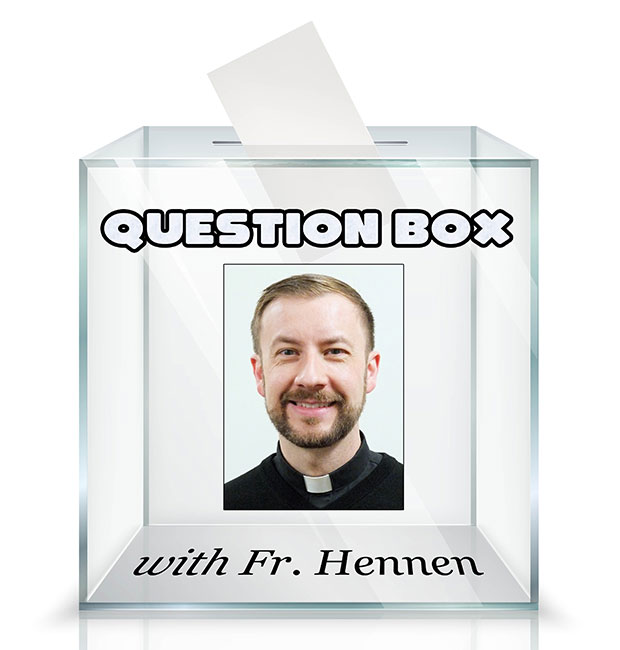
By Father Thom Hennen
Q: Years ago an elderly aunt of mine had holy Communion brought to her in her home by a priest on the first Friday of each month. Our relatives would light a candle and display a crucifix. Does this custom still exist?
A: The specific custom of first Friday Communion visits has greatly diminished. Though, some parishes or priests I know have kept this custom. Also, sadly, the level of preparation for such visits as you describe it has almost vanished.
At one time it was not uncommon for almost all Catholic households to have their own sick call set. This was often in an all-in-one crucifix that would normally be displayed on the wall but opened to store the candles. The base could be used as a stand for the crucifix and candles. Alternately, I have seen sick call sets that are kept in a box containing a crucifix and candle stand, and other items that may be needed.
The Pastoral Care of the Sick states: “When the Eucharist is brought to the sick, it should be carried in a pyx or small closed container. Those who are with the sick should be asked to prepare a table with a linen cloth upon which the blessed sacrament will be placed. Lighted candles are prepared and, where it is customary, a vessel of holy water. Care should be taken to make the occasion special and joyful.”
Ideally, something of this custom should still be observed. In practice, however, I have rarely seen it. This is likely because people are unaware of the custom. Also, priests, deacons and Extraordinary Ministers of Holy Communion more often have to do these visits at their convenience, between other responsibilities. This does not always allow people enough time to prepare.
There is a shorter, more simplified form of the rite for Communion in a hospital or institution, such as a nursing home. This level of preparation is not expected in these settings. I’m guessing hospitals and most care facilities would frown upon having lighted candles in patient or resident rooms, especially where oxygen may be in use.
Having said all of this, I think it is a beautiful and time-honored custom. As we look forward to the National Eucharistic Congress this month and continue in this time of Eucharistic Revival, perhaps this is a custom we should “bring back,” even if it never really went away. While it may not always be possible or practical, depending on the circumstances, it is an ideal for which to strive. It says a lot about our respect for the Eucharist.
Related to this, many people call the parish to ask the priest to come and administer “last rites.” By this they usually mean the Sacrament of the Anointing of the Sick. However, the sacrament of the dying is actually Communion or what we call Viaticum (in Latin, literally “on the way with you.”) When the continuous rite is celebrated (“the works”), it starts with the sacrament of penance, confirmation (if necessary), then anointing, then Viaticum (Communion). However, if there is not sufficient time and if the person is able, Viaticum should be given before anointing.
Interestingly, more than once in my priesthood I have been called to the hospital to give someone “last rites,” only to arrive and discover the person or the family is not even Catholic. I guess they have seen enough movies or just have a cultural instinct that when someone is dying you call a Catholic priest. I think we should take that as a compliment.
(Father Thom Hennen serves as the pastor of Sacred Heart Cathedral in Davenport. Send questions to messenger@davenportdiocese.org)








